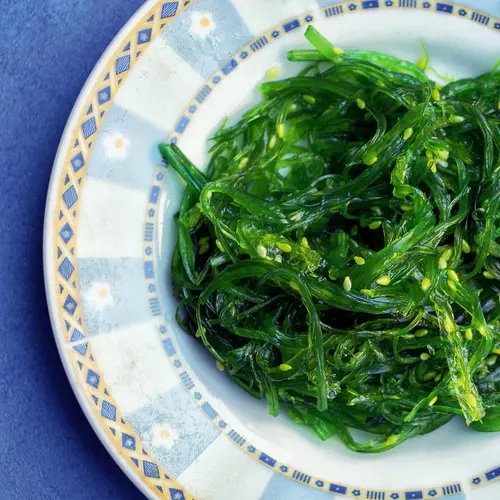Chicken has well-documented health benefits, but different parts and preparation methods factor into how healthy your chicken-based meal turns out. Darker cuts like the thigh and drumstick contain higher caloric content than lighter cuts like the breast. Keeping the skin or frying chicken will also add saturated fat.
If you’re switching out red meat for chicken, you’ll want to stick with chicken breast, as it’s the healthiest cut of the bird.
Health Benefits
Chicken makes a fantastic substitute for red meats. A great source of protein, the meat has been linked to a variety of health benefits:
Stronger Bones and Muscles
The lean protein in chicken is an excellent source of amino acids. Our bodies use amino acids to build muscle tissue, something that is particularly important as we age. Studies have also shown that higher protein intake helps to maintain bone mineral density. Eating chicken can help to build stronger muscles and promote healthier bones, decreasing the risk of injuries and diseases such as osteoporosis.
Weight Management and Heart Health
Research suggests that 25-30 grams of protein per meal can help us feel more full. Protein rich meals can make us feel fuller despite us eating less, which helps to promote better weight management. Healthier weight leads to improvements in risk factors for heart problems such as high triglyceride levels and high blood pressure. A food rich in protein, chicken can help with weight management and reduce the risk of heart disease.
Better Mood
Chicken contains the amino acid tryptophan, which has been linked to higher levels of serotonin (the “feel good” hormone) in our brains. The tryptophan levels in chicken aren’t high enough to make you feel instantly euphoric, but studies show it could help to boost serotonin levels when paired with other factors.
Nutrition
Chicken is filled with high-quality proteins and doesn’t contain much fat — especially if you eat lean cuts. Beyond its rich protein content, chicken also contains:
- Vitamin B12
- Tryptophan
- Choline
- Zinc
- Iron
- Copper
Nutrients per Serving
A raw, boneless skinless chicken breast fillet contains:
- Calories: 120
- Protein: 26 grams
- Fat: 2 grams
- Carbohydrates: 0 grams
- Fiber: 0 grams
- Sugar: 0 grams
Things to Watch Out For
The USDA recommends limiting portion sizes of foods like chicken to between two and six and a half ounces of protein per day. People who are physically active may need more.
Properly store and cook your chicken to prevent foodborne illnesses. Cross contamination during cooking or leaving chicken to sit out for too long can lead to bacterial growth that will get you seriously sick.
Though it’s considered a lean protein, chicken contains a small amount of cholesterol. If you’re on a low-cholesterol diet or at high risk for heart disease, pay close attention to the amount of cholesterol in the meat you buy. It never hurts to discuss what you’re eating with a doctor or dietician.
How to Prepare Chicken
After you buy chicken, make sure to refrigerate it within two hours. If you won’t cook your chicken within two days, freeze it in a freezer-safe plastic wrap and thaw it before cooking. There are several ways to thaw frozen chicken:
- Thaw it in the refrigerator for 24 hours prior to cooking.
- Submerge it in cold tap water to thaw. Change the water every 30 minutes. A three-pound package can take a couple of hours to thaw with this method.
- Use your microwave to thaw chicken. Make sure you cook it immediately afterward.
Whichever method you use, do not leave your chicken in an environment over 40 degrees F when thawing, as bacteria can begin to grow on the meat. You can also choose to cook your chicken frozen.
When cooking, focus on heating the meat to the right temperature instead of on cooking time. Chicken should reach an internal temperature of 165 degrees F before being eaten. To check, insert a food thermometer into the thickest part of whatever cut of chicken you’re cooking. Don’t let the thermometer touch any bones.
When baking chicken:
- A 4 ounce boneless breast should take 20 to 30 minutes at 350 degrees F to cook.
- Bone-in chicken breasts will be larger and take longer to cook. Put them in the oven for 30 to 40 minutes at 350 degrees F.
- For stuffed chicken breasts, bake for an extra 15 to 30 minutes to make sure it’s cooked through.
If you have to cut your chicken, use a separate cutting surface and knife to avoid cross contamination with other foods. When finished, thoroughly clean and sanitize the cutting surface and any kitchen tools that touched the raw chicken. Always wash your hands between touching raw meat and any other food.
There are many ways to enjoy a good chicken breast, including:
- Shredded in a salad.
- Grilled over rice or with vegetables.
- Sliced on a sandwich.
- As a substitute for a beef patty in a burger.
- Tossed with pasta and your favorite sauce.
- In a wrap with salsa and hummus.


